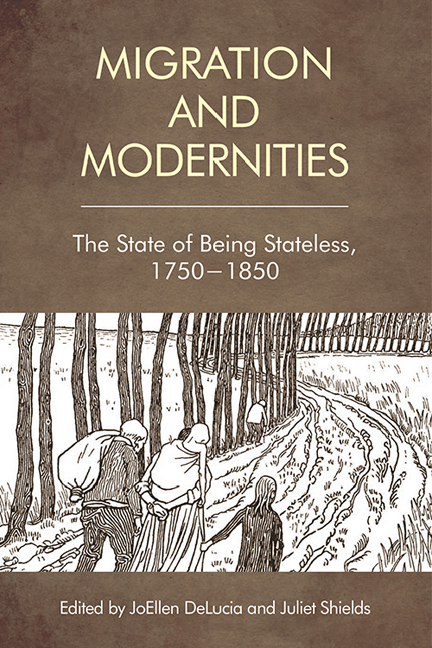Introduction: A Literary History of Migration, 1750–1850
Published online by Cambridge University Press: 05 May 2021
Summary
Migration has featured constantly in the news in recent years. Families fleeing war-torn Syria and Sudan walk hundreds of miles to find shelter in makeshift refugee camps that are no cleaner or safer than the slums of Victorian Manchester; some seek to escape to the Mediterranean or Western Europe in boats as overcrowded as the slave ships of the eighteenth century. Children born to undocumented immigrants in the United States face possible deportation from the only country they’ve ever known; and the United Kingdom's prospective departure from the European Union has compelled entire corporations to relocate from one nation to another, following the flows of capital. Although patterns, conditions, and experiences of mobility change, migration itself is nothing new. It's not just a constant feature in the news; it's arguably a constant of human experience.
How might accounts of earlier migrations help us to better understand geographic mobility in our current time? Migration and Modernities brings together chapters that provide insights into the patterns, conditions, and experience of migration at a moment that we might characterize as the beginnings of modernity, an era that saw the emergence of urbanization, industrialization, and global capitalism. The growth of Western European imperialism and the advent of industrialization in the eighteenth and nineteenth centuries triggered large-scale migrations. These socio-economic changes fostered new settler societies and expanded trade corporations, while also displacing indigenous people and propelling the slave trade. At the same time, revolutions across the Atlantic world introduced new concepts of citizenship and discourses of human rights. These revolutions created modern nationstates, and with them, political exiles.
Recent discussions of migration by the political theorist Thomas Nail and the postcolonial historian Dipesh Chakrabarty have reinforced the significance of the late eighteenth and early nineteenth century to mapping a larger history of migration. These authors suggest that patterns and conditions of migration that are familiar to us today emerged in the late eighteenth century. Nail positions the figure of the migrant as constitutive of political regimes, which often seek to regulate motion and monitor the flow of people both within and outside the state.
- Type
- Chapter
- Information
- Migration and ModernitiesThe State of Being Stateless, 1750–1850, pp. 1 - 14Publisher: Edinburgh University PressPrint publication year: 2018

